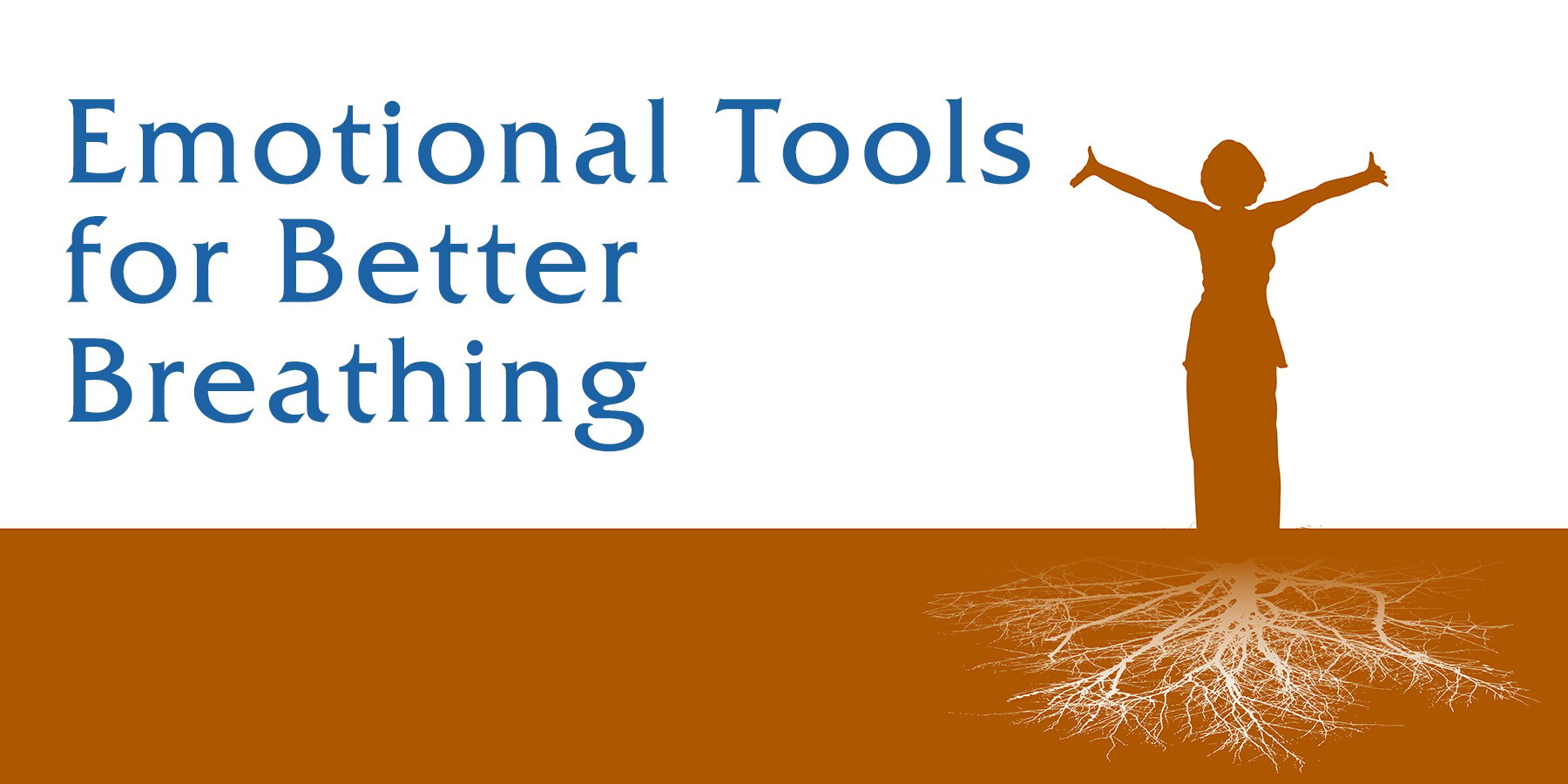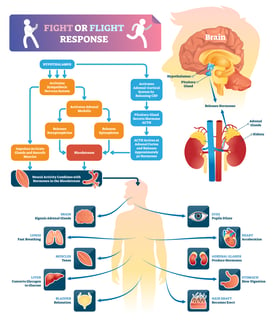Is it Anxiety or a Physical Exacerbation
- If symptoms come on very suddenly and produce feelings of panic or fear it is likely anxiety.
- If symptoms have been building over a period of time or have come on after exposure to a known trigger there is a good chance it is an exacerbation
- If your breathlessness begins to improve with deep breathing, you are likely experiencing anxiety.
- If symptoms do not improve it is probably time to move on to taking your rescue inhaler or whatever your doctor has prescribed for symptom escalation.
Exacerbation Signs
As someone living with a chronic lung condition it’s imperative that you monitor your symptoms daily. If you are experiencing any of the following symptoms be sure to let your doctor know and follow whatever medication protocols you have been given for symptom escalation.
- Extreme fatigue
- Changes in appetite or sleep
- Changes in mucus production
- Noises such as wheezing or rattling when you breathe
- Swelling in ankles or feet
- Increase in coughing
If you have any of the following symptoms, please seek immediate medical attention.
- Your fingertips or lips take on a bluish tint
- Confusion
- Disorientation
By learning to discern between emotional triggers and physical ones, you can learn to improve your breathlessness by learning breathing techniques to slow your breaths, inhale more deeply into your lungs, and also exhale fully to expel as much co2 as possible.
What to do if You Begin to Feel Breathless

Pursed lip breathing is one of the most effective ways to alleviate shortness of breath. It’s a good technique to slow your breathing and expel any CO2 that is built up in your lungs. This technique is often described as smelling a rose and blowing out a candle. You will want to count the time of your inhalation and try to exhale for twice the time of inhalation. So if you inhale for a count of 3, you will exhale for a count of 6 through pursed lips. Inhale deeply as if you are smelling a rose and when you exhale, use about the same amount of pressure as you would to blow out a candle. Be sure to breathe deeply into your belly, not just into your chest.
While pursed lip breathing, check your anxiety level. Try to calm your mind and focus on your breathing counts. This should quiet any distressing thoughts. Once you’ve quieted your mind, try to ascertain if you are indeed experiencing a physical symptom escalation. If so, do as your doctor has instructed you in these situations or seek medical attention immediately. If you are feeling better and suspect that your breathlessness is due to anxiety continue pursed lip breathing until you start to breathe easier.
Once you’re feeling less short of breath you can move on to what’s known as deep or diaphragmatic breathing. It helps to more fully engage the diaphragm to draw air in more deeply and more completely exhale. Basically it is a technique that makes your breathing more efficient. It also helps with relaxation.
To practice this breathing technique place one hand on your chest and one hand just below your rib cage. Inhale as deeply as you can and make sure you feel your belly expand with air. This ensures that you're breathing deep into your lungs, and not just into your chest. Once you’ve inhaled as much as you can, pause momentarily and then exhale through pursed lips. To exhale tighten your abdominal muscles and you should feel your belly fall and your chest should again remain still. Don’t force the air out as you did in the first technique. Just slowly and fully exhale.
Breathing exercises should be done multiple times throughout the day. They will help maintain lung elasticity and strengthen your diaphragm and intercostal muscles. They also assist in clearing mucus out of airways to ease inflammation and foster better breathing. Practicing these exercise in a cycle is known as the Active Cycle Breathing Technique.
To help you get the hang of how to do it, please watch this follow along video.
These techniques should improve breathlessness. And learning to determine whether an escalation of symptoms is due to an emotional factor vs a physical trigger can also help you to recognize when you are having a physical exacerbation so that you can take appropriate action such as using your rescue inhaler or seeking medical attention.
Emotions and Chronic Illness
Tending to your emotional health is just as important as tending to your physical health. In the long term it can also create a resistance to staying active for fear that it’s going to happen again and this only makes your overall health, and breathing, worse.
Anxious feelings may arise when you think about the big picture of a progressive lung disease. You may worry about experiencing an episode of difficult breathing.
Certain medications used to treat COPD can also trigger feelings of anxiety.
Anxiety and depression can also make you less motivated to do the things that you need to do to properly manage your respiratory condition. Things like taking medication regularly, eating properly, monitoring your symptoms, and following a fitness regimen may be compromised.
No one would tell you that living day to day with a chronic illness is easy. Especially if you are newly diagnosed, there are likely a lot of feelings churning inside of you. There are many resources available to help you learn to better manage your feelings.
Help for Anxiety and Depression
- Employ breathing exercises and stay physically active.
- Speak to your doctor about medication.
- Consider speaking to a counselor, therapist, or pastor.
Studies have shown that mindfulness practices can positively contribute to better treatment adherence, improved symptoms, and better overall health and happiness. Learn some meditation techniques through taking yoga or tai chi. There are guided meditation cds available as well as several options on YouTube.
Grounding

It’s important that those coping with a chronic illness don’t let fear and worry steal their emotional peace or worsen their health. To keep your emotions from running away with you and making your breathing worse, it might help to do a grounding exercise while being mindful to breathe slowly and deliberately.
Grounding is a practice that will pull your mind away from panic and distressing emotions. This will corral any spiralling thoughts, keeping your mind from triggering any fight or flight breathing issues, and hopefully bring your breathing back to normal. Grounding exercises are basically designed to bring you back to the here and now, to calm down quickly, and manage overwhelming feelings.
Don’t forget, it’s called a meditation “practice” for a reason. The success of the technique will grow over time as you get better at it and figure out what works best for you. The objective is to get your adrenaline fueled energy out and give your mind something else, specifically something positive to focus on. If you can call a friend, play with your pet, or start working on something you enjoy, that’s great but you won’t always be able to completely shift your focus like that.
The first thing you need to do is focus on your breathing so that you can get your breathlessness under control. Counting breaths and focusing on the breathing techniques we talked about should help rather quickly.
While you’re doing your mindful breathing, try some of these quick techniques as well. They can be done anywhere, and they’ve been proven to work, with practice of course. They are also easy to incorporate into mindful breathing.
Engage Your Concentration and Senses
This is a fun distraction that will draw your concentration away from negative emotions. Pick a category and try to name twenty things that fit into that category. For instance movies; what are your top 20 movies? Flowers; name 20 flowers. You get the idea.
You can make this exercise more effective by incorporating other senses such as, pick a color and then look around and see how many things that you can find that are that color. You can also try something like, sounds. How many sounds can you hear? Traffic, birds, your air conditioner, etc. How many square objects can you see? Look around you and try to identify as many as possible.
We have created a video that leads you through a common grounding exercise known as the 5-4-3-2-1 exercise. This exercise engages all your senses and can be done anywhere while you’re doing either pursed lip or deep breathing.
The better you can control your emotions, the better you’ll be able to control your breathing. If you begin to feel breathless, check your anxiety and employ the techniques that you have learned to get both your breathing and anxiety back under control.


 These fearful emotions send signals to the brain that trigger your natural fight or flight instincts. The response is automatic and immediate. It is largely an activation of the sympathetic nervous system that humans evolved to save them in a dangerous situation. As the name suggests, it prepares the body to turn and battle a threat or turn or run for it’s life.
These fearful emotions send signals to the brain that trigger your natural fight or flight instincts. The response is automatic and immediate. It is largely an activation of the sympathetic nervous system that humans evolved to save them in a dangerous situation. As the name suggests, it prepares the body to turn and battle a threat or turn or run for it’s life.

